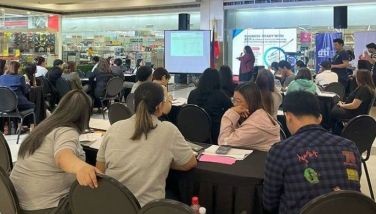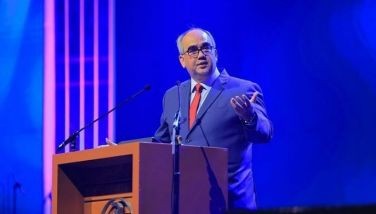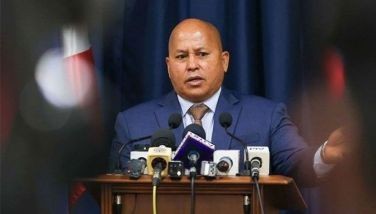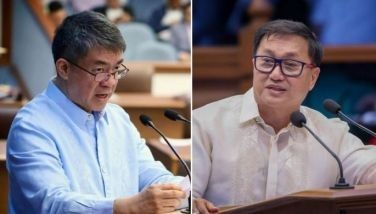[OPINION] Metro Manila: The ugly neighbor

![[OPINION] Metro Manila: The ugly neighbor](https://media.philstar.com/images/articles/gen13-inflation-hits-poor-michael-varcas_2018-10-22_22-41-42.jpg)
While our neighbors in the region invest heavily to make their capital cities smarter, greener and more livable, our government shows little care about how Metro Manila is evolving. The uncomfortable truth is that Metro Manila is now the ugly neighbor to Singapore, Kuala Lumpur and Bangkok. It is a city that has become increasingly dense, decayed and decrepit. Backpacker.com named it the worst Asian city to visit, Waze named it the worst city for motorists and the Asian Correspondent named it the least sustainable city in Asia.
Like frogs sitting in a pot of slowly boiling water, residents of Metro Manila have been made to live with squalor, congestion (physical and visual) and the indignity of being a pedestrian. Living by these conditions has become our “new normal”. Making matters worse is that government does not prioritize the welfare of the capital – never mind if Metro Manila contributes 33 percent of the nation’s productivity and wealth, never mind if it is the nation’s face to the world and never mind if it is home to the most concentration of Filipinos.
Metro Manila needs an earnest urban renewal badly, whether in one fell swoop or in stages.
How did we get here? The ill-conceived enactment of the Local Government Code of 1991 sealed Metro Manila’s fate. It will be recalled that the law called for the dissolution of the Metro Manila Commission (later on changed to the Metro Manila Authority), the super body that was responsible for long term city planning and management. In its place, powers were devolved to the local governments of Metro Manila’s 16 cities and one municipality, all of whom adopted their own laws, ordinances and development plans.
The local government code created political dynasties that treated their cities like mini-kingdoms. Mayors looked inward, concerned only with the development of their respective domains. This explains why Metro Manila’s growth has been disorganized, disjointed and bereft of a long term vision.
The Metro Manila Development Authority (MMDA) was created but only as a coordinating body. Its role is limited to aligning plans and ordinances among LGUs, not to enforce them.
As far as the national government is concerned, it has a say only on certain aspects of the metro’s functionalities. Among them are the management of bus franchises, railway systems, national roads, solid waste disposal, etc.
This flawed governmental structure makes it conducive (and convenient) for the national government and LGUs to engage in an frenzy of finger pointing when things go awry. In the end, neither takes responsibility – neither are accountable.
The years 1998 to 2010 were lost years for Metro Manila in as far as infrastructure development is concerned. Things improved during the Aquino and Duterte administrations as both sought to solve two of the city’s most serious problems – infrastructure and density. As a result, we now enjoy the NAIA Skyway and look forward to the opening of two SLEX-NLEX connector roads, the Harbour Link Road, MRT 7 and the Subway, among others. We also look forward to the development of New Clark City as this will massively decongest Metro Manila.
So what can we do now? The silver bullet would be to appoint a governor or replace the MMDA with a superbody similar to the Metro Manila Commission, both with powers that supersede the LGUs. However, this cannot happen without an act of Congress. That said, the next best thing is to solve two pressure points, which, if solved, can dramatically change the way Metro Manila looks and feels. The first pressure point is the poor condition of pedestrians owing to the lack of roofed pedestrian lanes. The second is the uncontrolled proliferation of billboards.
Widening of sidewalk need not be a long and complicated process that involves invoking government’s right of eminent domain. Wide and aptly roofed pedestrian lanes can be built over public roads using the existing sidewalk as the place in which to plant foundations. Overhead sidewalks are nothing new – it has been adopted by other dense cities like Hong Kong, Osaka and Mumbai. In fact, it is what was done in the Ortigas CBD with great success. This model needs to be expanded on a metro-wide scale.
As for billboards, they are visual pollution, plain and simple. They deprive us from enjoying the vistas of our city and whatever greeneries are left. They clutter the city making it appear more chaotic than it already is. Worse, billboards trap carbon dioxide making us breath stagnant, polluted air.
My regular readers know that I have written about this many times before. I will continue to do so until the Department of Public Works and Highways (DPWH) fulfills its mandate to enforces the building code.
Unbeknown to most citizens, the majority of billboards are illegal. The national building code is very clear with its regulations. Among them is that no billboard can be located within a one hundred meter radius from another; No billboard can be erected in a manner that it obstructs the view of landscapes; No billboard shall obstruct fire escapes or emergency exits; Roof signs are prohibited; No billboard or LED signs can be installed over or across public roads; Billboards are not allowed in sidewalks, flyovers, interchanges, traffic signs, communications posts, waiting sheds and LRT/MRT carriageways, columns and beams; Billboards cannot be installed on light posts.
These regulations render the majority of billboards illegal. Yet, they are allowed to operate by both the DPWH and the LGUs in flagrant disregard of the law. One can only surmise that corruption has overcome the public good. The billboard menace is out of control.
We can expect the DPWH and LGUs to blame each other for the lack of sidewalks and the visual trashing of the city by way of billboards.
When no one else takes responsibility, then the buck ends with the President. All it takes is a policy directive from Malacañang to build wider pedestrian lanes and to dismantle illegal billboards. With this, we can assure that the DPWH and LGUs will fall in line. Hence request this policy directive from the President.
President Duterte still has two years left in his mandate. Even if he fails to deliver 80 percent of infrastructure projects in Build Build Build, I reckon the 13 million residents of Metro Manila will still consider him a success if he gives us a network of pedestrian lanes and gives us back the vista of our city, free of billboard clutter.
- Latest
- Trending





























